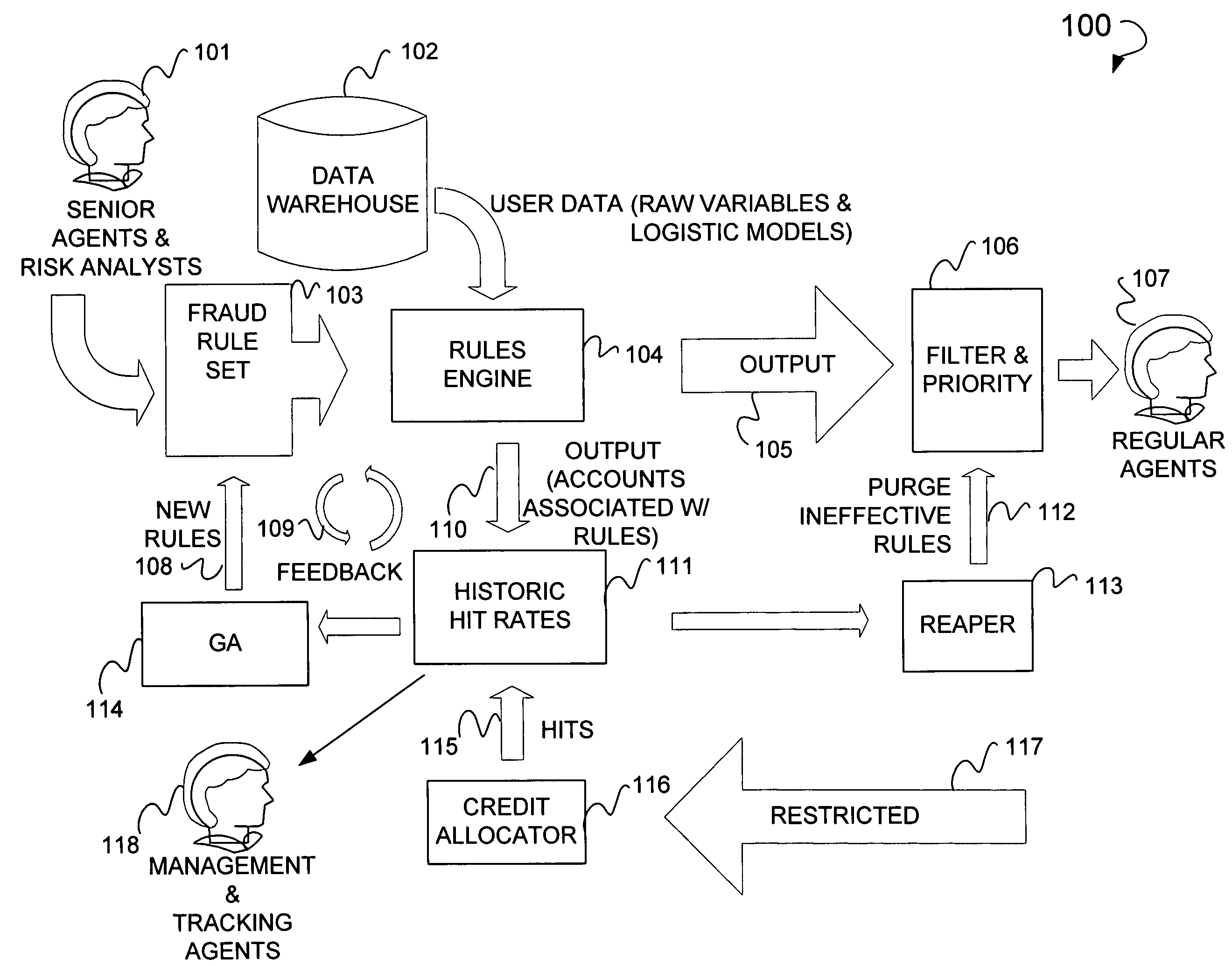Online fraud prevention using genetic algorithm solution
a technology of genetic algorithm and online fraud, applied in the field of algorithm and programming, can solve the problems of fraud schemes appearing on online auction sites and achieve the most common form of internet fraud, and fraud in the online world
- Summary
- Abstract
- Description
- Claims
- Application Information
AI Technical Summary
Benefits of technology
Problems solved by technology
Method used
Image
Examples
Embodiment Construction
[0026]Example methods and systems to enhance fraud detection are described. In the following description, for purposes of explanation, numerous specific details are set forth in order to provide a thorough understanding of example embodiments. It will be evident, however, to one skilled in the art that the present invention may be practiced without these specific details.
[0027]FIG. 1 is a flow chart 100 illustrating a high level overview of a method and system for fraud detection. Described in FIG. 1, is a senior agent & risk analysts 101 who creates a rule set 103 to be fed to a rules engine 104. Further, a data warehouse 102 may also feed data to the rules engine 104. The output of the rules engine 104, in the form of an output 105, is fed to a filter and priority module 106. The filter and priority module 106 provides output to a Regular Agent 107. The rules engine 104 provides output in the form of accounts associated with rules 110 to a historic hit rate module 111. The histori...
PUM
 Login to View More
Login to View More Abstract
Description
Claims
Application Information
 Login to View More
Login to View More - R&D
- Intellectual Property
- Life Sciences
- Materials
- Tech Scout
- Unparalleled Data Quality
- Higher Quality Content
- 60% Fewer Hallucinations
Browse by: Latest US Patents, China's latest patents, Technical Efficacy Thesaurus, Application Domain, Technology Topic, Popular Technical Reports.
© 2025 PatSnap. All rights reserved.Legal|Privacy policy|Modern Slavery Act Transparency Statement|Sitemap|About US| Contact US: help@patsnap.com



